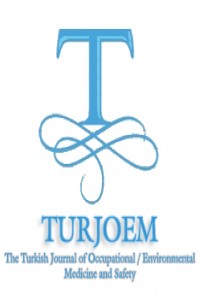Öz
Sirtuin (SIRT)
is known as a silent information regulator. They are NAD + dependent class III histone
deacetylases (HDACs) which have been linked to cellular function such as metabolism,
aging, cancer and cell life. In mammalian, there are seven members of the
sirtuin family and their intracellular localizations are different. For
example, SIRT1, SIRT6 and SIRT7 locate mainly in the nucleus, SIRT2 locates in
the cytoplasm, SIRT3, IRT4 and SIRT5 locate mainly in the mitochondria.
Although subcellular localization of SIRT1 is in the nucleus, it also regulates
mitochondrial function and metabolic homeostasis including oxidative
phosphorylation and mitochondrial biogenesis. As for mitochondrial sirtuins,
SIRT3 is often linked to thermogenesis which play an important role in
controlling reactive oxygen species originating from mitochondria and it
locates in heart, brain, testis, liver, kidney, muscle and adipose tissue.
SIRT4 is often linked to insulin secretion and it is expressed in all tissues
but it locates in pancreas, liver, brain with highest level. SIRT5 is also
often linked to urea cycle. The mitochondrial sirtuins are considered
attractive drug targets due to regulate significant metabolic pathways and
can be stimulated with molecules which effect activity of Sirt. In this context,
these molecules can be useful for treatment of mitochondria-related diseases.
The regulation of sirtuin enzymes and their implications in mitochondrial
functions have been discussed in present review.
Anahtar Kelimeler
Kaynakça
- Kenan Can TOK, Yasemin KARTAL, Zeliha KAYAALTI
- Department of Forensic Toxicology, Institute of Forensic Sciences, Ankara University, Ankara, Turkey Department of Physiology, Faculty of Medicine, Hacettepe University, Ankara, Turkey
Öz
Kaynakça
- Kenan Can TOK, Yasemin KARTAL, Zeliha KAYAALTI
- Department of Forensic Toxicology, Institute of Forensic Sciences, Ankara University, Ankara, Turkey Department of Physiology, Faculty of Medicine, Hacettepe University, Ankara, Turkey
Ayrıntılar
| Bölüm | Articles |
|---|---|
| Yazarlar | |
| Yayımlanma Tarihi | 16 Şubat 2017 |
| Yayımlandığı Sayı | Yıl 2017 Cilt: Volume 2 Sayı: İssue 1 (1) - 2.İnternational Congress Of Forensic Toxicology |


